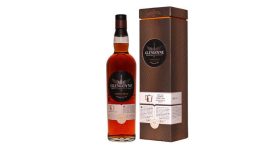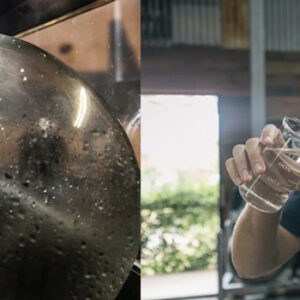What the hell is chill-filtration and non-chill filtered, and does it matter?!
let’s begin
Many Whiskies released today proudly declare that they are “Non-Chill Filtered”, but what is chill-filtration to begin with, and more importantly, what does it do to taste?
What is chill-filtration?
Chill-filtration is the process of removing esters and fatty acids from Whisky. This is done as those elements cause haze when the liquid is stored or transported at low temperatures, and they can also produce sediment.
To carry out chill-filtration, Whisky is reduced to around 0°C and strained through a very fine filter.
This collects esters, which create hazing in Whisky with an ABV below 46%. They are soluble in alcohol, but insoluble in water, so when the liquid is diluted, hazing can occur more easily. This was originally done due to consumer pressure and to enhance the consumer experience as in some countries whisky drinkers are put off by cloudy whiskies, especially when they add ice – it can appear to them that the product is faulty. This adds a level of consistency, as E150c caramel colouring does too; it does not alter the flavour, but creates harmony so that products, typically mass-market blends and single malts look consistent on shelf and do not visually vary between batches.
What about taste?
Temperature is an important part of chill-filtration and therefore it does have an effect on taste. Esters themselves carry certain flavour compounds as well so removing them well inevitably change the taste, if even marginally.
As this article from Bruichladdich Distillery on Islay points out, there are around 100 flavour compounds that contribute to taste, aroma and mouth feel. These compounds are removed by chill-filtration.
An example of this is ethyl acetate, which effects the aroma of Whisky. It is created through the oxidisation of toacetaldehyde by ethanol and becomes a fatty acid called acetic acid that in turn reacts to alcohol to become ethyl acetate.
It is also removed during chill-filtration, therefore having a direct effect on flavour.
So what’s the point?
Essentially, chill-filtration is carried out so hazing does not occur and sediment does not build up, rather than having any benefit on taste.
It is for aesthetics rather than flavour, and as such, many distilleries have stopped carrying out the process, or if they did not do it in the first place now fly the flag for non-chill filtered whisky being superior to chill-filtered whisky.
There are still some that argue that chill-filtration doesn’t effect flavour, but it certainly removes some of the complexity of the liquid.
The question to ask yourself when considering the debate is do aesthetics trump taste? Do you like your Whisky for the look or for the flavour?
It’s up to the consumer to make the ultimate choice, but with major distilleries and brands such as Douglas Laing, Ardbeg, Compass Box and Bruichladdich all getting behind the non-chill-filtered movement, you have to ask when all single malts at least will be non-chill filtered… probably never, but we can still wonder…
Do you prefer your whisky chill-filtered or non-chill-filtered? Start the conversation in the comments
















2 thoughts on “What the hell is chill-filtration and non-chill filtered, and does it matter?!”
Typo on ethanol -the t and the h are the wrong way round
Thank you very much – updated !